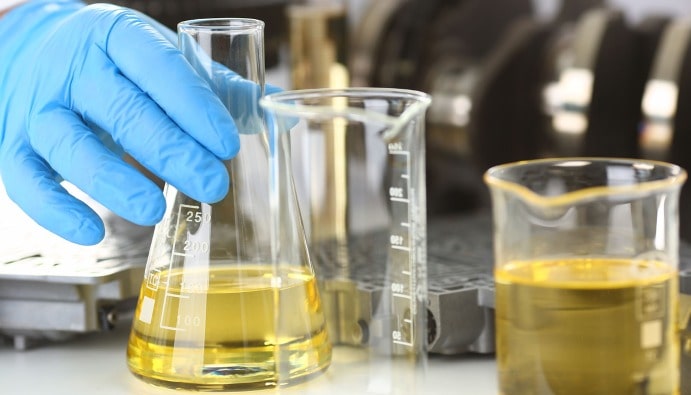
BLOG
KATEGORİDEKİ DİĞER YAZILAR

During storage, the effects of physical and chemical factors such as oxygen, metal ions, temperature and light lead to the deterioration of oils. This situation affects oil quality. The most critical value in terms of quality in oils is the oxidation level. In order to determine the oxidation level of oils, the primary oxidation products are calculated by the hydroperoxidases peroxide number method, while the secondary oxidation products are calculated by measuring the P- Anisidin value.
The P- Anisidine value can be used as an approximate measure to estimate the storage stability of freshly processed oils. Peroxide number serves to detect the primary products of lipid oxidation, while P- Anisidine measures the secondary products (aldehydes and ketones). The total oxidation (totox) value is calculated to find the maximum level of oxidation products in the same oil.
The quality value of edible oils is determined by the “Totox Value”. It is calculated using peroxide and p- anisidine value.
Totox Value= 2 X Peroxide Number + P-Anisidine value.
In line with the studies conducted, the critical limits of oils are reported as <5 mEq/kg for peroxide number, <20 for P- Anisidine value and <26 for Totox value, respectively.
The Totox value takes into account the current state of the product (using peroxide number) and its history (P-Anisidine value). Accordingly, the differences in the Totox value are of greater importance than the individual values. Although this method has been known for some time, there are no limits or official standard quality criteria for oils.
The quality of fats plays a critical role in the flavor, nutritional value and safety of a food product. Oxidation of fats can affect not only taste and odor, but also their nutritional content. Oxidized fats often produce harmful compounds such as trans fatty acids, which can be associated with diseases such as heart disease and cancer. Furthermore, as oxidation progresses, the shelf life of food products is shortened and their nutritional value is lost.
By determining the level of oxidation of fats,the TOTOX value indicates when products start to deteriorate or are at an increased risk of spoilage. This is an important parameter, especially for food manufacturers and processors:
The rate of oxidation in fats varies depending on a number of factors. These factors include:
Nanolab Laboratories Group continues to provide services within the scope of Total Oxidation in Oils (TOTOX) Value Analysis. We also provide services in Olive Oil Analysis.
Contact us for more information.
You can follow us on LinkedIn for up-to-date news and posts about our services.
Follow our Instagram account to be informed about our latest blog posts.